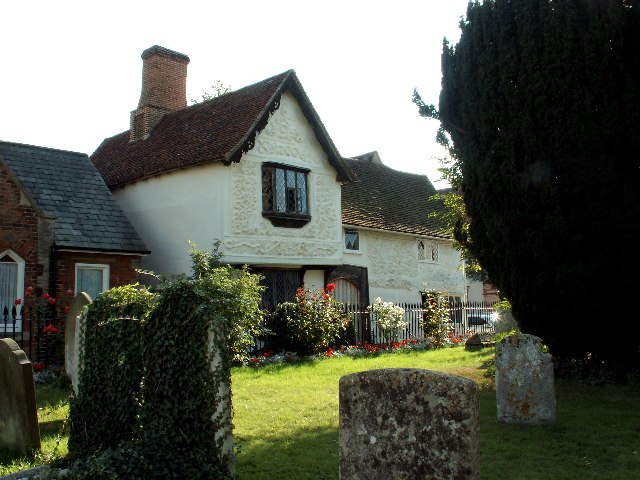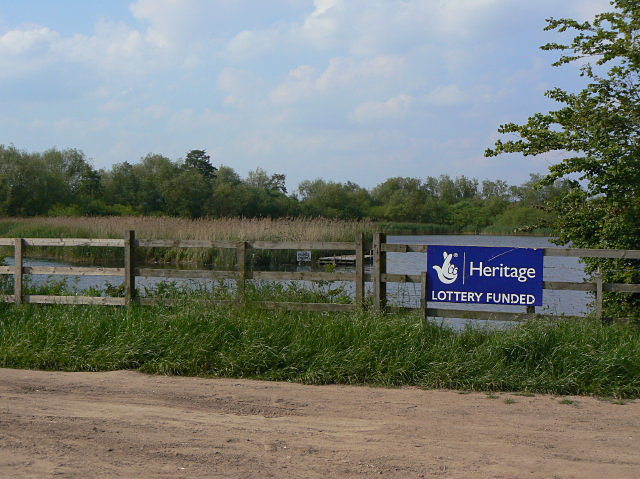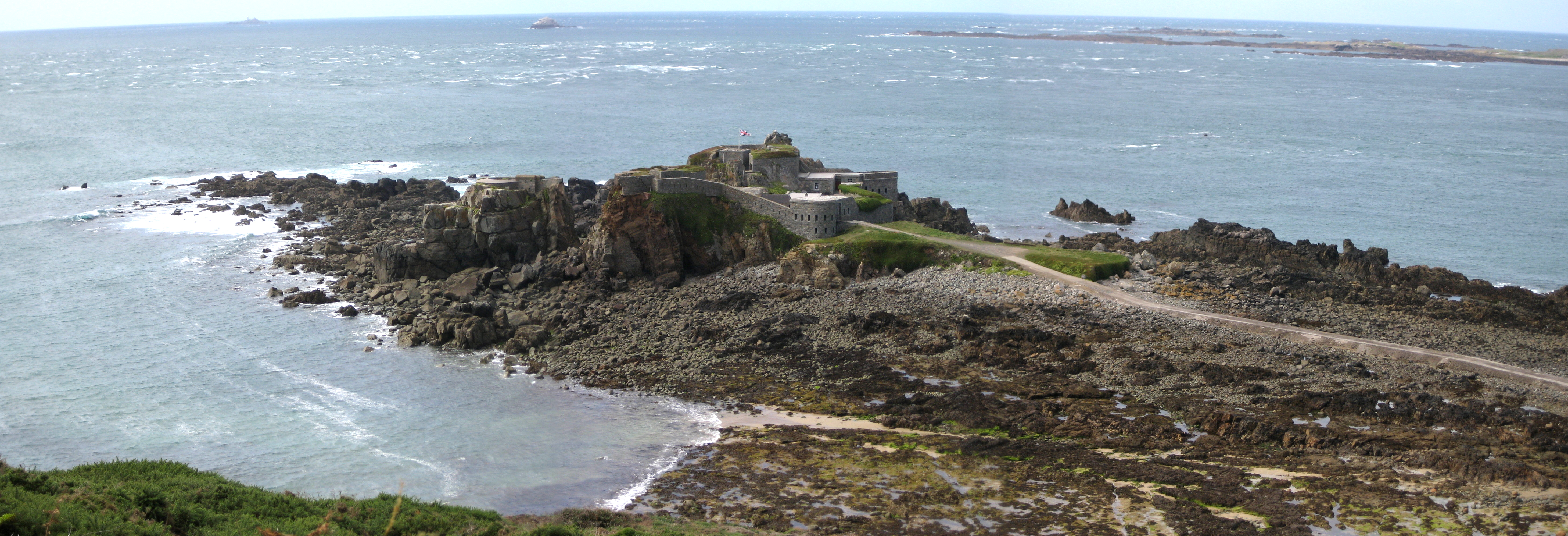|
Ancient House, Clare
The Ancient House is a medieval timber-framed and partly pargeted building located in Clare in Suffolk, England. It is a Grade I listed building. History The oldest part of the building is the west wing, dating from the 14th century, whilst the heavily decorated east wing is believed to have been built in 1473. The house features a moulded timber ceiling in one of the ground floor rooms and some elaborately carved oriel windows. It is mentioned in a will dating to 1502. The Ancient House was acquired in the early 1930s by a local farmer, Charles W. Byford, in order to prevent its removal to the United States. It was then gifted in 1938 to Clare Parish Council to put to "a useful public purpose". A museum was established by the council in 1979. In the 1990s it was re-designed with grants and help from the Heritage Lottery Fund, St Edmundsbury District Council, and the Landmark Trust The Landmark Trust is a British architectural conservation, building conservation charita ... [...More Info...] [...Related Items...] OR: [Wikipedia] [Google] [Baidu] |
Clare - Ancient House
Clare may refer to: Places Antarctica * Clare Range, a mountain range in Victoria Land Australia * Clare, South Australia, a town in the Clare Valley * Clare Valley, South Australia Canada * Clare (electoral district), an electoral district * Clare, Nova Scotia, a municipal district Republic of Ireland * County Clare, one of the 32 counties of Ireland ** Clare (Dáil constituency) (since 1921) ** Clare (UK Parliament constituency) (1801–1885) ** County Clare (Parliament of Ireland constituency) (until 1800) * Clarecastle, a village in County Clare * Clare, County Westmeath, a townland in Killare civil parish, barony of Rathconrath * Clare Island, County Mayo * River Clare, counties Galway and Mayo *Clare (barony), in County Galway South Africa * Clare, Mpumalanga, a town in Mpumalanga province United Kingdom * Clare, County Antrim, a townland in County Antrim, Northern Ireland * Clare, County Armagh, a village in County Armagh, Northern Ireland * Clare, County Down, a tow ... [...More Info...] [...Related Items...] OR: [Wikipedia] [Google] [Baidu] |
Timber Framing
Timber framing () and "post-and-beam" construction are traditional methods of building with heavy Beam (structure), timbers, creating structures using squared-off and carefully fitted and Woodworking joints, joined timbers with joints secured by large wooden pegs. If the Structural system, structural frame of Load-bearing wall, load-bearing timber is left exposed on the exterior of the building it may be referred to as half-timbered, and in many cases the infill between timbers will be used for decorative effect. The country most known for this kind of architecture is Germany, where timber-framed houses are spread all over the country. The method comes from working directly from logs and trees rather than pre-cut Lumber#Dimensional lumber, dimensional lumber. Artisans or framers would gradually assemble a building by hewing logs or trees with broadaxes, adzes, and draw knife, draw knives and by using woodworking tools, such as hand-powered Brace (tool), braces and Auger (dril ... [...More Info...] [...Related Items...] OR: [Wikipedia] [Google] [Baidu] |
Pargeting
Pargeting (or sometimes called Wall pargetting) is a decorative or waterproof plastering applied to building walls. The term, if not the practice, is particularly associated with the English counties of Suffolk and Essex. In the neighbouring county of Norfolk, the term "pinking" is used. Patrick Leigh Fermor describes similar decorations on pre-World War II buildings in Linz, Austria. "Pargeted façades rose up, painted chocolate, green, purple, cream and blue. They were adorned with medallions in high relief and the stone and plaster scroll-work gave them a feeling of motion and flow." Pargeting derives from the word 'parget', a Middle English term that is probably derived from the Old French ''pargeter'' or ''parjeter'', to throw about, or ''porgeter'', to roughcast a wall.''Webster's Dictionary''. However, the term is more usually applied only to the decoration in relief of the plastering between the studwork on the outside of half-timber houses, or sometimes covering the ... [...More Info...] [...Related Items...] OR: [Wikipedia] [Google] [Baidu] |
Clare, Suffolk
Clare is a market town and civil parish on the north bank of the River River Stour, Suffolk, Stour in the West Suffolk District, West Suffolk district, in the county of Suffolk, England. Clare is in southwest Suffolk, from Bury St Edmunds and from Sudbury, Suffolk, Sudbury. Clare won Village of the Year in 2010 and Anglia in Bloom award for Best Large Village 2011 for its floral displays in 2011. In March 2015, ''The Sunday Times'' and Zoopla placed Clare amongst the top 50 UK rural locations, having "period properties and rich history without the chocolate-box perfection – and the coach trips". In 2011 it had a population of 2028. Clare and its vicinity has evidence of human habitation throughout prehistory, through the Norman Conquest, to the present day. Through the Anglo-Normans , Anglo-Norman family de Clare, who took the name of this village, the name spread to other places and institutions such as County Clare in Ireland and Clare College, Cambridge. The town hosts ... [...More Info...] [...Related Items...] OR: [Wikipedia] [Google] [Baidu] |
Suffolk
Suffolk ( ) is a ceremonial county in the East of England and East Anglia. It is bordered by Norfolk to the north, the North Sea to the east, Essex to the south, and Cambridgeshire to the west. Ipswich is the largest settlement and the county town. The county has an area of and a population of 758,556. After Ipswich (144,957) in the south, the largest towns are Lowestoft (73,800) in the north-east and Bury St Edmunds (40,664) in the west. Suffolk contains five Non-metropolitan district, local government districts, which are part of a two-tier non-metropolitan county administered by Suffolk County Council. The Suffolk coastline, which includes parts of the Suffolk & Essex Coast & Heaths National Landscape, is a complex habitat, formed by London Clay and Crag Group, crag underlain by chalk and therefore susceptible to erosion. It contains several deep Estuary, estuaries, including those of the rivers River Blyth, Suffolk, Blyth, River Deben, Deben, River Orwell, Orwell, River S ... [...More Info...] [...Related Items...] OR: [Wikipedia] [Google] [Baidu] |
Listed Building
In the United Kingdom, a listed building is a structure of particular architectural or historic interest deserving of special protection. Such buildings are placed on one of the four statutory lists maintained by Historic England in England, Historic Environment Scotland in Scotland, in Wales, and the Historic Environment Division of the Department for Communities in Northern Ireland. The classification schemes differ between England and Wales, Scotland, and Northern Ireland (see sections below). The term has also been used in the Republic of Ireland, where buildings are protected under the Planning and Development Act 2000, although the statutory term in Ireland is "Record of Protected Structures, protected structure". A listed building may not be demolished, extended, or altered without permission from the local planning authority, which typically consults the relevant central government agency. In England and Wales, a national amenity society must be notified of any work to ... [...More Info...] [...Related Items...] OR: [Wikipedia] [Google] [Baidu] |
Heritage Lottery Fund
The National Lottery Heritage Fund, formerly the Heritage Lottery Fund (HLF), distributes a share of National Lottery funding, supporting a wide range of heritage projects across the United Kingdom. History The fund's predecessor bodies were the National Land Fund, established in 1946, and the National Heritage Memorial Fund, established in 1980. The current body was established as the "Heritage Lottery Fund" in 1994. It was re-branded as the National Lottery Heritage Fund in January 2019. Activities The fund's income comes from the National Lottery, which is managed by Allwyn Entertainment. Its objectives are "to conserve the UK's diverse heritage, to encourage people to be involved in heritage and to widen access and learning". As of 2019, it had awarded £7.9 billion to 43,000 projects. In 2006, the National Lottery Heritage Fund launched the Parks for People program with the aim to revitalize historic parks and cemeteries. From 2006 to 2021, the Fund had granted £2 ... [...More Info...] [...Related Items...] OR: [Wikipedia] [Google] [Baidu] |
Borough Of St Edmundsbury
St Edmundsbury was a local government district with borough status in Suffolk, England. It was named after its main town, Bury St Edmunds. The second town in the district was Haverhill. The population of the district was 111,008 at the 2011 Census. The district was formed on 1 April 1974 under the Local Government Act 1972 (along with the abolition of the county of West Suffolk) by the merger of the Borough of Bury St Edmunds, Haverhill Urban District, Clare Rural District and Thingoe Rural District. Until March 2009, its main offices were in Bury St Edmunds (Angel Hill and Western Way). Thereafter, a purpose-built complex named West Suffolk House housed both St Edmundsbury and Suffolk County Council staff. In 2008, the Council submitted a proposal to the Boundary Commission which would see it as central to a new West Suffolk unitary council. However, the proposal was rejected and no unitary scheme for Suffolk was adopted. (For more details see also Suffolk.) In Octobe ... [...More Info...] [...Related Items...] OR: [Wikipedia] [Google] [Baidu] |
Landmark Trust
The Landmark Trust is a British architectural conservation, building conservation charitable organization, charity, founded in 1965 by John Smith (Conservative politician), Sir John and Lady Smith, that rescues buildings of historic interest or architectural merit and then makes them available for holiday rental. The Trust's headquarters is at Shottesbrooke in Berkshire. Most Trust properties are in England, Scotland and Wales. Several are on Lundy Island off the coast of north Devon, operated under lease from the National Trust for Places of Historic Interest or Natural Beauty, National Trust. In continental Europe there are Landmark sites in Belgium, France and Italy. There are five properties in Vermont, US, one of which, Naulakha (Rudyard Kipling House), Naulakha, was the home of Rudyard Kipling in the 1890s. The Trust is a charity registered in England & Wales and in Scotland. The American sites are owned by an independent sister charity, Landmark Trust USA. There is also ... [...More Info...] [...Related Items...] OR: [Wikipedia] [Google] [Baidu] |
Landmark Trust Properties In England
A landmark is a recognizable natural or artificial feature used for navigation, a feature that stands out from its near environment and is often visible from long distances. In modern-day use, the term can also be applied to smaller structures or features that have become local or national symbols. Etymology In Old English, the word ''landmearc'' (from ''land'' + ''mearc'' (mark)) was used to describe a boundary marker, an "object set up to mark the boundaries of a kingdom, estate, etc." Starting around 1560, this interpretation of "landmark" was replaced by a more general one. A landmark became a "conspicuous object in a landscape". A ''landmark'' literally meant a geographic feature used by explorers and others to find their way back to their departure point, or through an area. For example, Table Mountain near Cape Town, South Africa, was used as a landmark to help sailors navigate around the southern tip of Africa during the Age of Exploration. Artificial structures are ... [...More Info...] [...Related Items...] OR: [Wikipedia] [Google] [Baidu] |
Grade I Listed Buildings In Suffolk
As of April 2006 there were 410 Grade I listed buildings in Suffolk, England. In the United Kingdom, the term listed building refers to a building or other structure officially designated as being of "exceptional architectural or historic special interest"; Grade I structures are those considered to be "buildings of "exceptional interest, sometimes considered to be internationally important. Just 2.5% of listed buildings are Grade I." The total number of listed buildings in England is 372,905. In England, the authority for listing under the Planning (Listed Buildings and Conservation Areas) Act 1990 rests with English Heritage, a non-departmental public body sponsored by the Department for Culture, Media and Sport. The non-metropolitan county of Suffolk consists of 5 districts: these are Ipswich, the capital, East Suffolk, Mid Suffolk, Babergh and West Suffolk. The list has been divided into the following geographical areas, representing each all the Grade I listed buildings i ... [...More Info...] [...Related Items...] OR: [Wikipedia] [Google] [Baidu] |
Grade I Listed Houses
Grade most commonly refers to: * Grading in education, a measurement of a student's performance by educational assessment (e.g. A, pass, etc.) * A designation for students, classes and curricula indicating the number of the year a student has reached in a given educational stage (e.g. first grade, second grade, K–12, etc.) * Grade (slope), the steepness of a slope * Graded voting Grade or grading may also refer to: Music * Grade (music), a formally assessed level of profiency in a musical instrument * Grade (band), punk rock band * Grades (producer), British electronic dance music producer and DJ Science and technology Biology and medicine * Grading (tumors), a measure of the aggressiveness of a tumor in medicine * The Grading of Recommendations Assessment, Development and Evaluation (GRADE) approach * Evolutionary grade, a paraphyletic group of organisms Geology * Graded bedding, a description of the variation in grain size through a bed in a sedimentary rock * ... [...More Info...] [...Related Items...] OR: [Wikipedia] [Google] [Baidu] |





